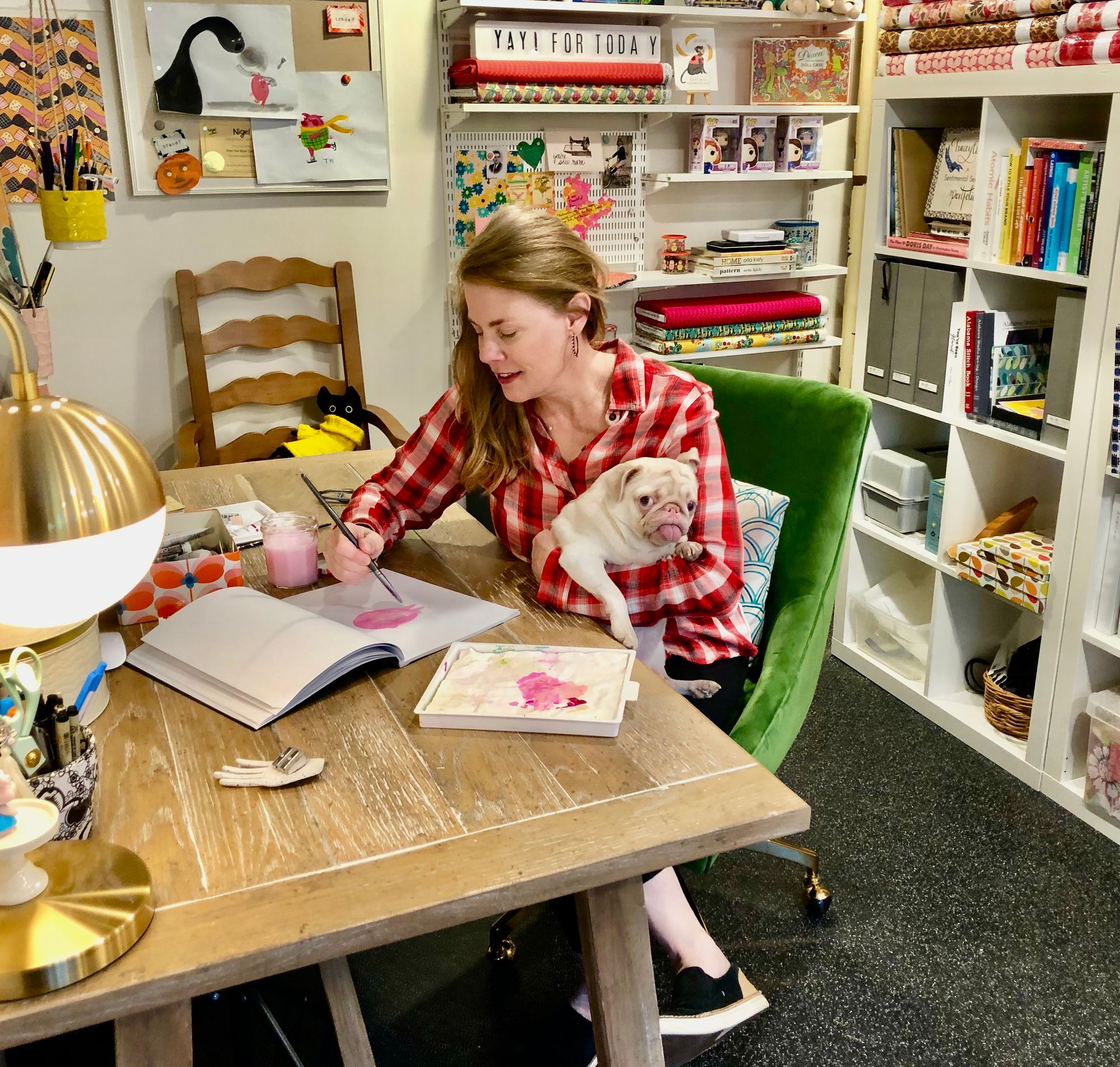
Hi Creative Community!
My name is Tracey Wirth and I am the artist behind Tracey Wirth Designs. I’m an illustrator first, but an early passion for sewing eventually led to my career as a surface pattern designer. Today I cater mostly to the quilting fabric market and the greeting cards industry.
Surface pattern design is so vast, and it is special. If you can see it, you can put a pattern on it – this is almost always true. As a mother to two boys, I didn’t get to shop for any fun, frilly clothes or accessories, but as a surface pattern designer I get to adorn any surface I want. The reach is infinite!

The journey to becoming a surface pattern designer
I grew up in rural Michigan. From an early age, I knew that art would be a huge part of my life. My dad dabbled in oil painting for a while, and I loved to sit side by side with him painting. I enjoyed sewing and creating things with my hands and felt excited at the idea of putting my artwork out into the world for people to enjoy.
When I enrolled in Michigan State University to study Art, my father encouraged me to pursue a more "secure" specialization and so I opted for Interior Design. The thing that appealed the most to me about Interior Design was that it involved a lot of drawing, but upon graduation I soon realized it wasn’t the right path for me. My undying love for sewing, quilting and fabrics more generally is what made me land on Surface Pattern Design.

The journey to becoming a pattern designer didn’t come without its challenges!
I started by connect with established professionals in the field. They all recommended becoming highly skilled in Photoshop and Adobe Illustrator, but for a creative working primarily with her hands that seemed like an impossible task! Back then I barely used a computer and when I did it was mostly to send out emails. It was frightening.
It's by joining Skillshare that I gained access to all sorts of creative outlets and support. I found an introductory course to surface pattern design taught by Bonnie Christine that I could take my time completing. A seemingly small event that changed everything! I quickly learned how to put a design into a repeat pattern and it wasn’t so complicated.
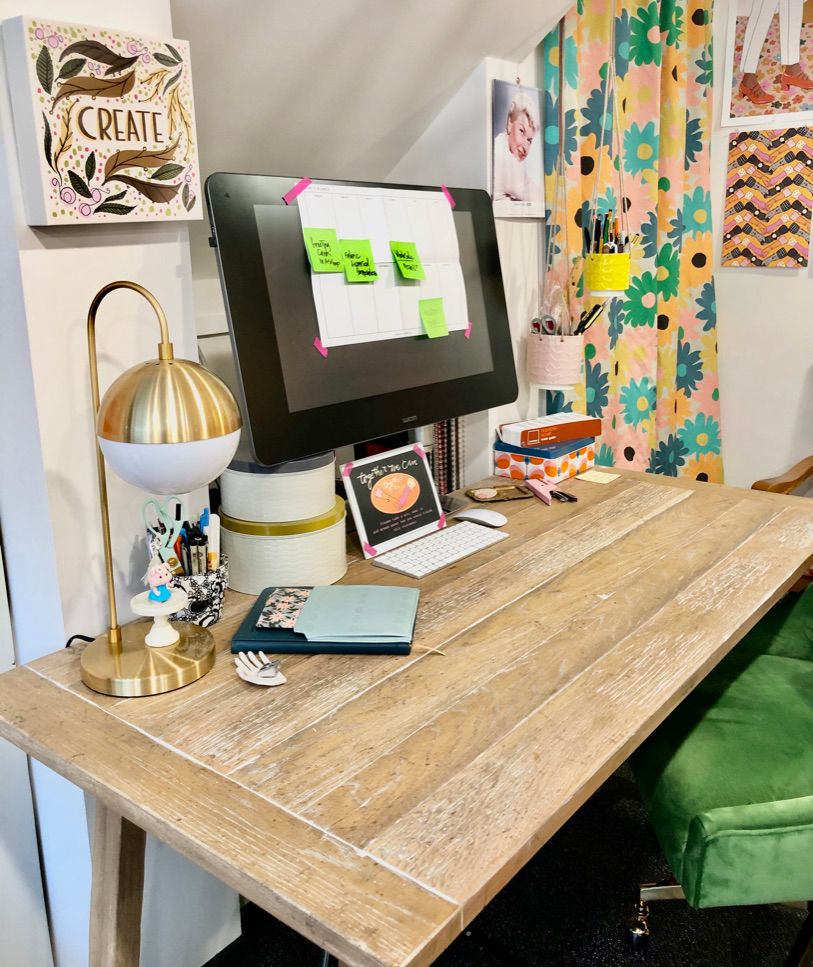
The second big challenge was to break into the fabric and textile design industry. From day one, all I’d really wanted was a fabric deal. I imagined it would be fairly easy - after all I was not just a pattern designer but also a sewist and quilter, and had been since I was 11! I don't think I could have foreseen how many others were wanting to break into this field. Just getting an email response was few and far in between!
I took on the challenge by fully immersing myself into the quilting world. I worked for nearly 5 years concentrating only on fabric, submitting and submitting to quilting fabric companies. I would reach out to other designers and ask, 'how did you first start'? and absorb each and every piece of advice. Eventually, I discovered quilting retreats and they became a must. I found myself meeting so many amazing women and would listen carefully to what they liked in fabric design and learn from what they didn’t.
The hard work and determination finally paid off! On my first Quilt Market I met with several creative and art directors and, soon after, received an email from a quilting fabric company that wasn’t even on my radar. Paintbrush Studio Fabric liked my portfolio and wanted to sign me! It was my Big Break.
I love creating for Paintbrush Studio Fabric and others. I choose to find happiness in every small thing I do and hope to share joy and brighten people's day through my work.
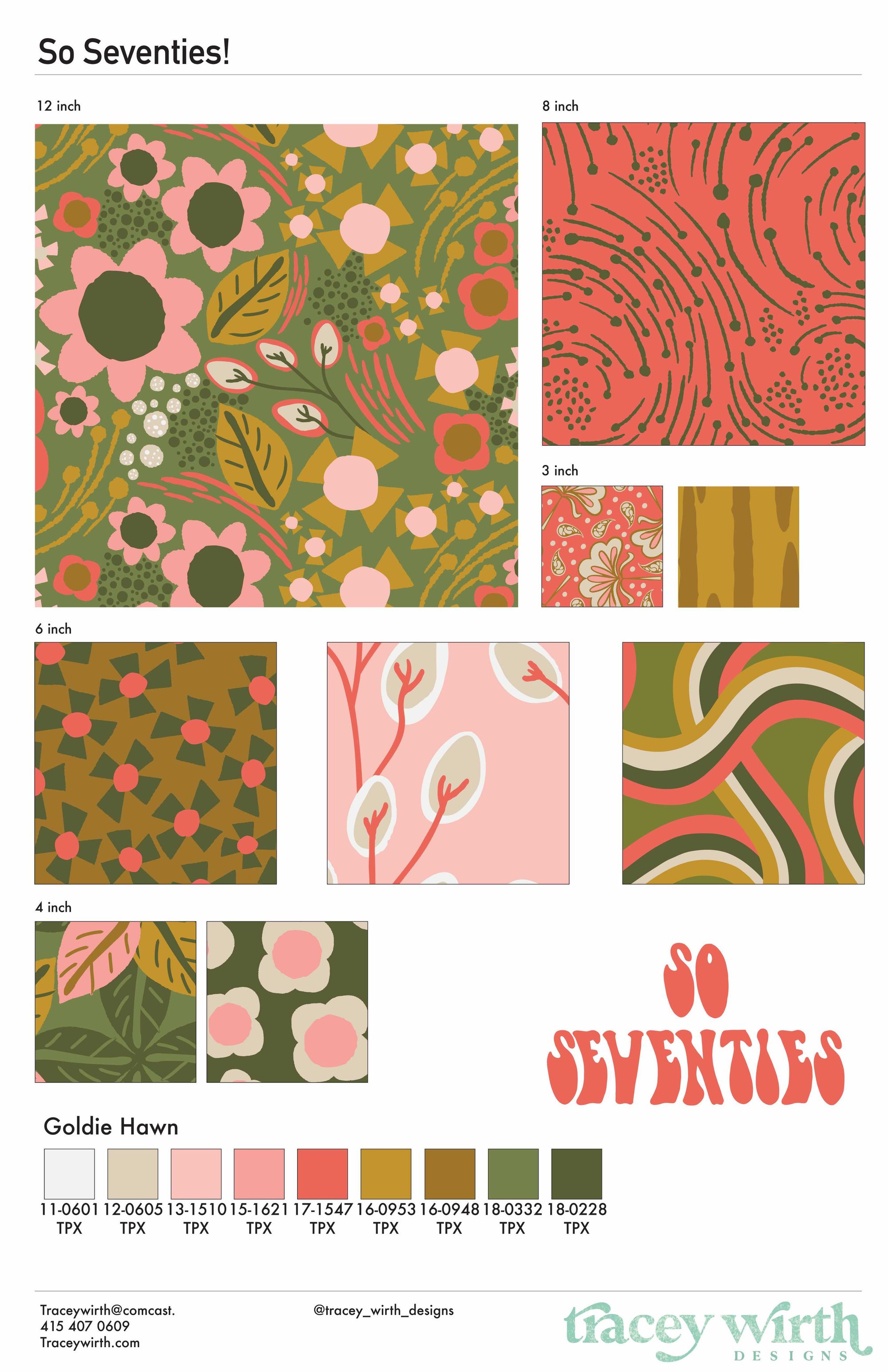
Rapid Fire Q&A 🔥
What's your favourite...
way to start the day?
Coffee, coffee, coffee! Did I mention Coffee?
design tool?
I love, love, love my iPad + Apple pen. These tools have made my workflow so much faster and more enjoyable!
source of inspiration?
The 70’s, living on the West Coast, holidays in Cape Cod and my upbringing in Michigan.
colour?
Green, all greens.
design hero/person you aspire to?
I love Orla Kiely. The colors she works with are very close to my heart and inspire my color choices, too.
productivity hack?
Doodles. Keep all your doodles, and if you aren’t going to use them immediately you may find them useful later on in another one of your collections.
client wrangling tip?
You never know where you may find your next client. I was approached in a Starbucks line and on an airplane because I was talking about fabric and surface design!
piece of advice you've received?
Find your style and develop it.
brand identity or design by another business?
Banyan Bridges. Racheal paints murals that are full of happiness and hope. I love everything she does. Check out Banyanbridges.com!
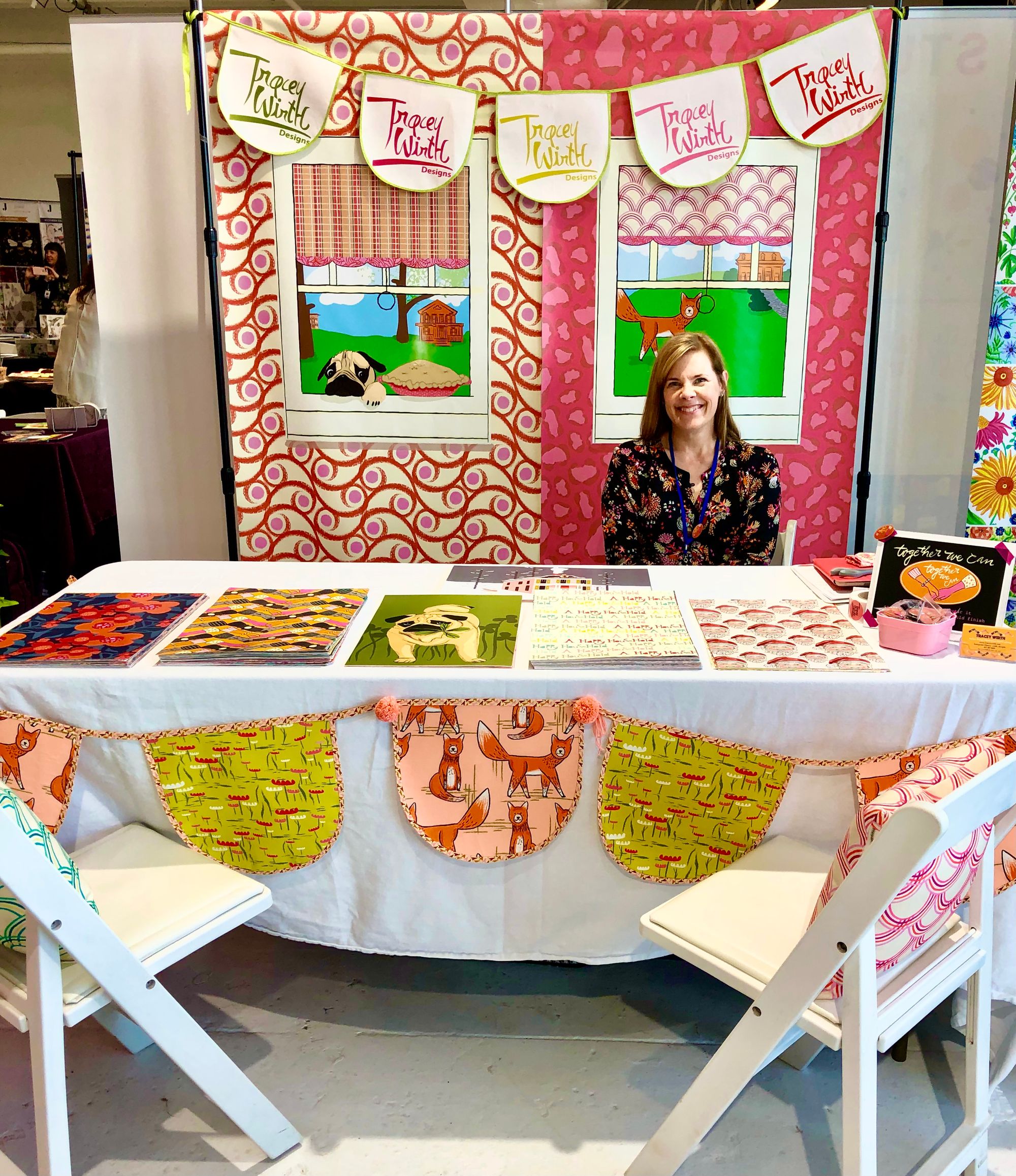
Tracey’s Advice
Build a unique identity
Experiment with your aesthetic and decide who YOU are. If your work comes across as confused, it will be harder to secure projects or be sought out by clients. Build out a great portfolio, making sure it reflect a unique personality that people will recognize and remember.
Develop an understanding of the product you’re designing
Be clear on what medium you are interested in and study it. For me, initially, it was quilting fabric. I joined quilting guilds, went to quilting retreats and gained knowledge from fellow quilters about what they were looking for in fabrics. I am a modern quilter – bright colors seemed to be what was most wanted.
I learned that to build a collection for quilting fabric you need about 7-12 designs, in different scales, design texture, depths of colors and blender like designs. There really is a lot that goes into a quilt to make it interesting.
Having had knowledge in sewing and quilting gave me a leg up. If you too are able to get some skills under your belt with regard to the medium you are choosing to design for, do so.
Another tip: create mockups for those surfaces you wish to design for! There are many resources for mock-ups. I usually look to Creative Market.
Actively build your client base
Researching companies that are in need of SPD is so important (and a lot fun!). Make sure to do your homework. Understanding your clients' businesses is key, the more knowledgeable you are the better your submissions will be. Learn about the business landscape and the people behind each business. Once you land a gig, build a meaningful relationship with the creative director and let it grow organically.
Equally, keep your eyes ALWAYS peeled. You never know where your next client will be. There are many businesses that don’t even realise they need surface pattern design and that you could help grow with your skills!
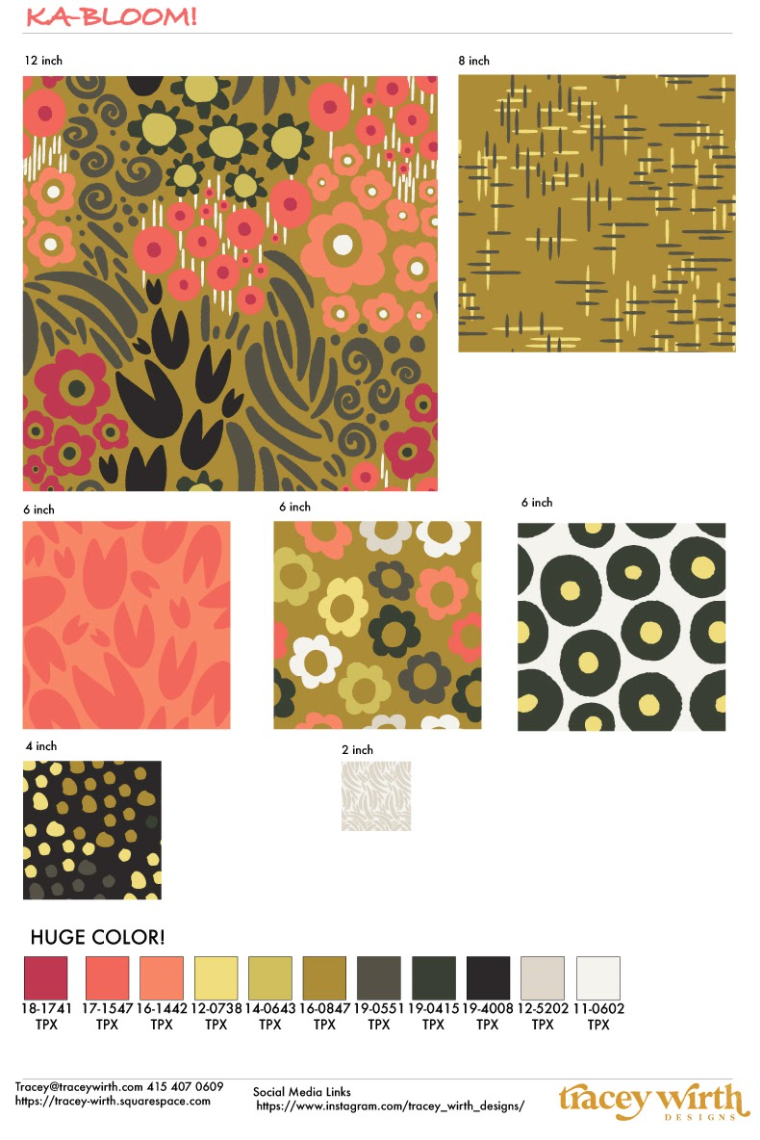
Not just quality, also quantity!
This is especially true if you’re just starting out. To get noticed you’ll need to submit, submit, submit. It may be a while before creative directors start seeking you out, so at least in the early stages the burden falls on you!
Circulate your work and attend networking events frequently. Send snail mail, like a postcard you designed to companies you may be wanting the attention of. Make a phone call to talk directly to the art/creative director. Getting your work in front of as many eyes as possible will significantly increase your chance of getting a gig!
Don’t take rejections to heart
Sometimes reaching out to art directors won’t get you an answer at all. You can also expect to get rejected a few (or many) times. Remember that receiving a no does not necessarily mean it’s the end. It may in fact be a no, for right now. If this is your dream company, don’t give up. Keep sending them current work and showcasing your development. Often all you really need is to get your work in front of the right eyes.
Partner up
If you decide to go the freelancer route, it doesn’t have to be a lonely process. I myself, have always been a freelancer. Recently though, I became part of the Art Licensing Portfolio. Lisa Larsen is the creator of ALP and has represented me many times at virtual trade shows like Blueprint, with much success. This has been really great for me. Becoming part of something bigger will increase your reach and grant you visibility, while allowing you to retain your freedom.
Pay attention to your socials
Admittedly one of my least favorite things that I still struggle with BUT is super important to art directors is social media. Put in the time to develop a compelling social media and digital presence. Build up your followers, it matters!
Welcome feedback
Listen to colleagues, clients and creative directors. Be ready to rethink and adapt. Show your work to your heroes if you get the chance and ask for pointers! I was able to show my portfolio to Denyse Schmidt and she wad kind enough to give me many valuable tips.
Her advice to me and mine to you is…
KEEP GOING!
Find out more about Tracey Wirth by visiting her website or checking out her Instagram.
Are you a creative professional? Care to get featured in the Creative Buzz Series and impart some wisdom? Follow this link to brief us!

